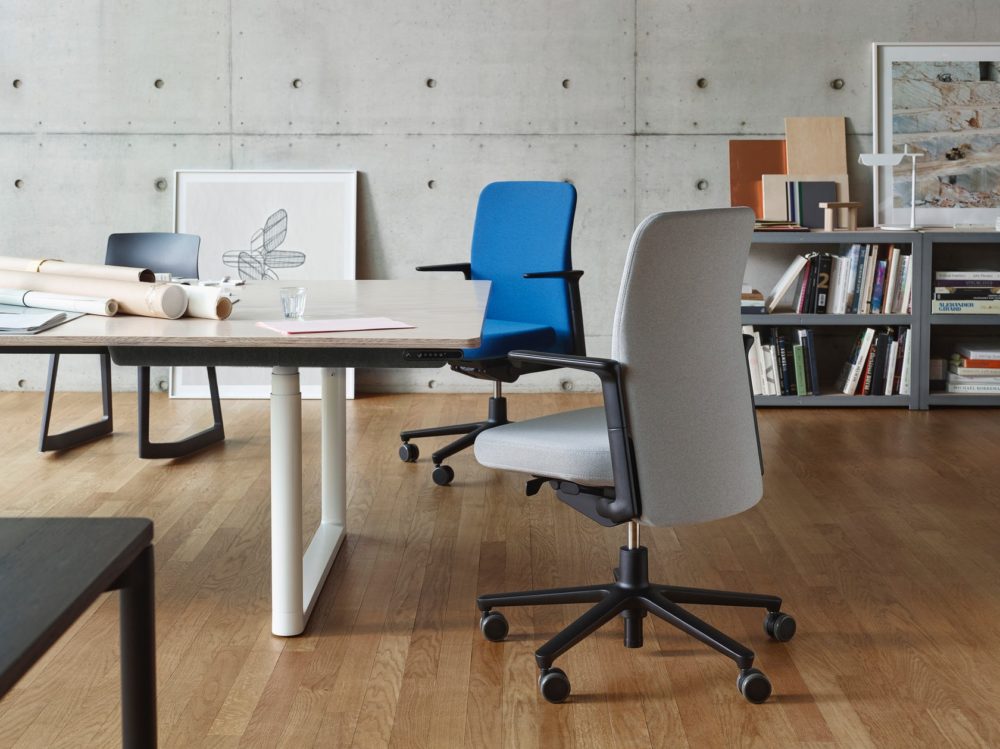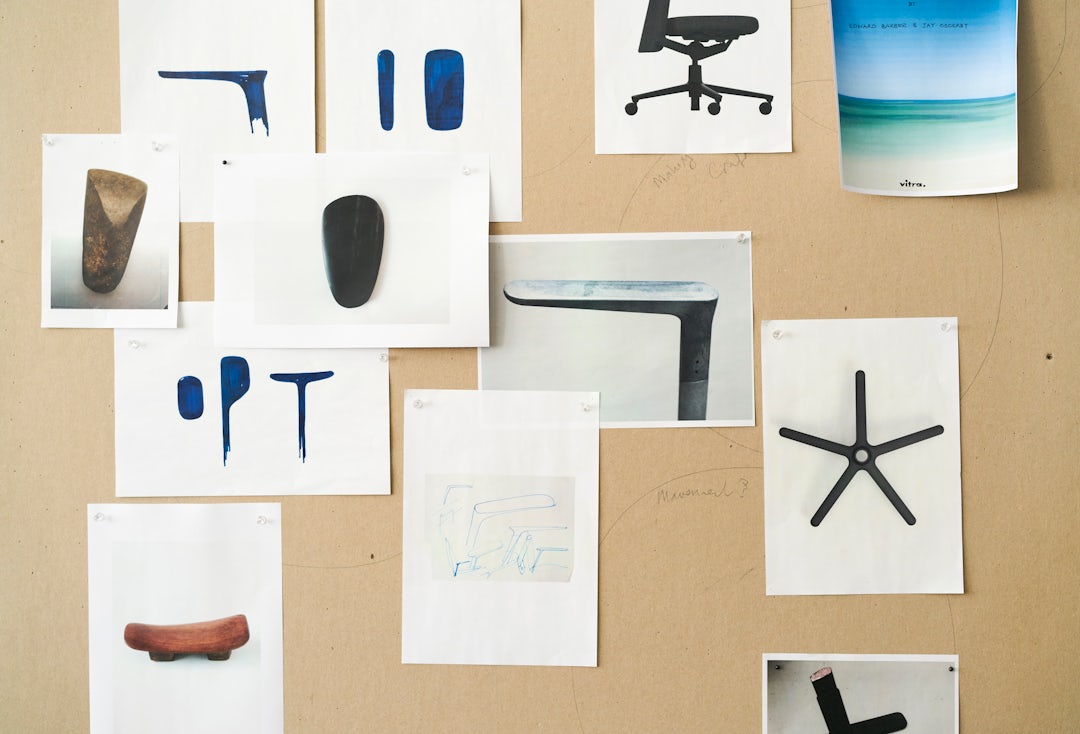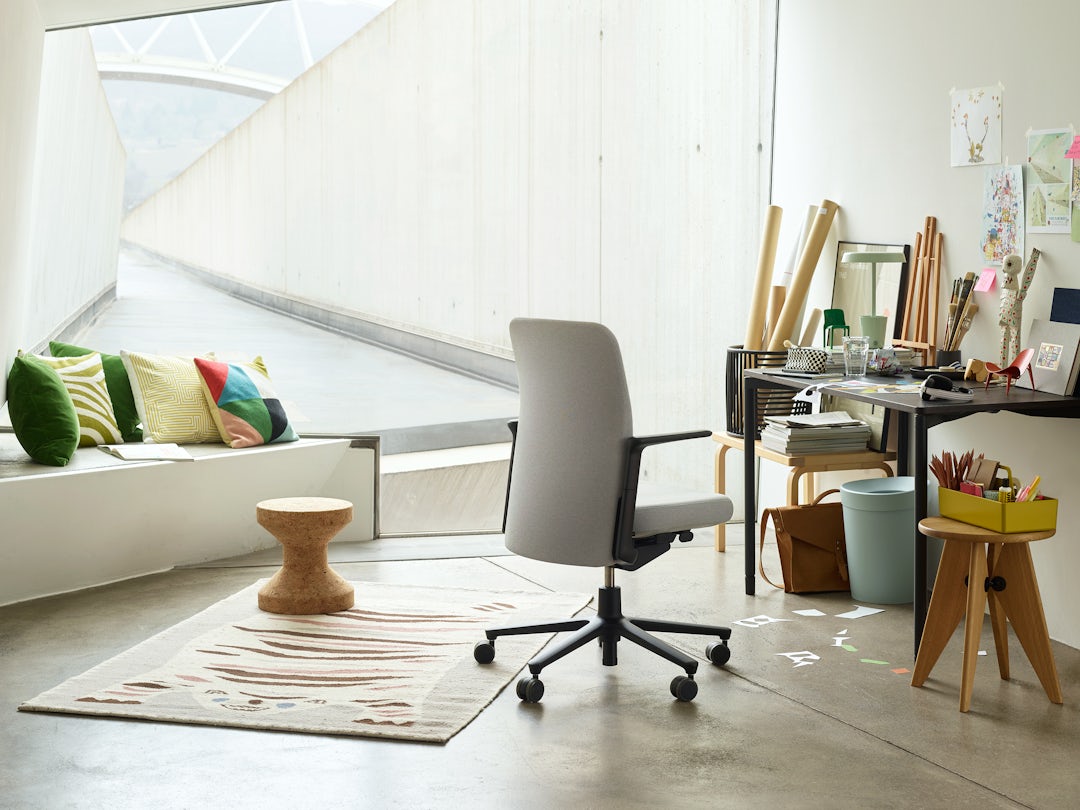
Manufacturers have a devoted friend in designers Edward Barber and Jay Osgerby, the namesakes of renowned design studio Barber Osgerby. “The relationship with a manufacturer goes beyond handing over a napkin sketch,” Osgerby explains, “we’re happy to do all we can to support its success.” The Swiss manufacturer Vitra has repaid Barber Osgerby’s tirelessness by commissioning the studio’s first-ever task chair.
Vitra had tested Barber and Osgerby’s mettle prior to this assignment. Five years ago, the London-based duo completed the solid plastic chair Tip Ton, which allows users to assume different seating positions. After Tip Ton’s release, Vitra patriarch Rolf Fehlbaum invited Barber Osgerby to conceive a next-generation ergonomic office chair.
Osgerby recalls that Fehlbaum’s “generosity of trust made us think really hard. We felt the obligation to bring [to fruition] something that responded in a new way to a familiar environment.”
Between 2013 and 2015, the designers researched guiding principles and concepts in part via Universal Design Studio, the separate architecture and design studio that Barber and Osgerby founded in 2001. “The studio is regularly engaged in workplace design, and that provided us with insights into what clients were needing and how needs were changing,” Osgerby says. The transformation of the workplace from cellular offices to open space with a residential inflection caught their eye, in particular. With the removal of barriers between workers came clearer views to scattered desktops, draped coats and visual chaos generally.
Studio mood board with ancient objects as inspiration
Entropy demanded a calming response. Instead of taking cues from Aeron and its ilk, then, Barber Osgerby looked to ancient forms that elicit a sense of peace. A 10,000-year-old Samoan ax would inform the shape of the armrest; an adjacent curve may recall a footstool worn over the centuries. The designers also determined that making the Pacific Chair feel more like time-honored furniture would suit the rooms in people’s homes that are becoming increasingly infiltrated by work.
“The concept is to have all the functions of a classic task chair without looking it,” Barber says of the final product, in which a height-adjustable backrest extends beneath the seat plane to hide mechanical components from behind. “We’ve hidden all the controls under the seat, and embedded the lumbar support under the seat.”
The Pacific Chair family
In addition, the armrests are disengaged from the seat plane — now they align with the back — to allow users to shift into multiple seating positions, including a sideways shape. In another connection to Tip Ton, Pacific Chair tolerates and even welcomes fidgeting. The height-adjustable back accommodates a wider array of body types and sizes, too.
Osgerby calls ergonomic variety “a nice byproduct” of the mission of visual serenity. “Holding apart the elements of the chair so that there’s air around them is another way of simplifying the silhouette of the object.” Barber underscores the point: “The Pacific Chair really is based on our observation that the classic office chair is like a robot. And the task chairs in America are even more machine-like than they are in Europe and Asia.”
Pacific Chair in a home setting
Thus far, the American market has responded to the Pacific Chair in both respects. Chai Lee, who directs branding and client engagement for architectural glassmaker Skyline Design, test-drove various models at an event in Chicago, and commented, “the elongated back allows the user to sit upright without feeling uncomfortable.” Lee ultimately settled on alternating perched and leaning postures. Osgerby reports that others have “felt like we had created something that ticks the boxes of what a facility manager needs an office chair to do, but it looks calm and has the essence of the Eames Aluminum Group.”
The Pacific Chair is full-performance in nature but not appearance, and as such, Barber Osgerby has conceived architects’ new BFF.



